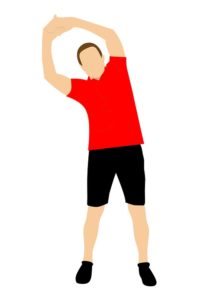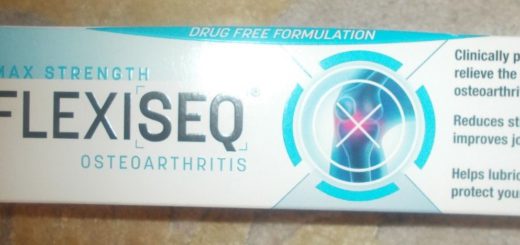Is Heat Good For Arthritis? (The Pros & The Cons)

Applying heat is a super popular remedy for joint pain. I’ve tried it lots of times and I was pretty satisfied. Why?
- It doesn’t require much skill
- Most of the times – it’s way cheaper than classic therapy
But is heat good for arthritis – for real? Does it help the joints or it simply masks the pain for a while?
Also – does it work better than ice? Or should you should replace it with frozen bottles?
I tried to analyze the positive and the negative side of heating therapy for arthritis.
THE GOOD
#1 – Decreases Joint Stiffness
You may not know it – but warmth really helps morning stiffness.
 That’s why lots of arthritis sufferers place their bed close to heating pipes. In this way, they would wake up with warm and softer joints.
That’s why lots of arthritis sufferers place their bed close to heating pipes. In this way, they would wake up with warm and softer joints.
How Exactly?: Heat makes every muscle and tissue more flexible, including the ones around the joints:
- so the joints themselves get softer and more pliable
Obviously – this technique doesn’t make miracles.
So don’t expect to wake up with perfectly flexible joints. At least not if you have rheumatoid arthritis.
But heat can really decrease your morning stiffness – in terms of length.
It’s also very helpful if:
- you’re working in an office
- you’re sitting down for a long period of time
In these cases, joint stiffness is pretty common – so applying heat can solve this problem, at least partially.
2. Makes Exercising More Possible
 When you have arthritis – exercising is almost impossible. And that’s not just because of pain.
When you have arthritis – exercising is almost impossible. And that’s not just because of pain.
Yes, moving is usually pretty painful – but sometimes your joints are so inflexible that any movement is basically impossible.
So what can heat do about it?:
- Besides making the joints more flexible
- It can also warm them up before exercising
- In this way – any movement should be easier and less painful than before
How Exactly?: Applying heat manages to increase the fluid around that joint.
More fluid means more flexibility and less pain, so you should be able to move easier and, who knows – even exercise a bit.
That would be almost impossible otherwise, that’s why I really recommend applying heat before going for a longer walk.
Obviously, you won’t be able to jump up if you haven’t done that for years. But when it comes to major effort, it will surely help you.
3. Extra Lubrication
As warmth improves joint flexibility – it also increases their lubrication.
That’s something you need whether you have an auto-immune form or osteoarthritis.
How Exactly: Heat stimulates synovial fluid, which is the liquid around the joints.
So once you apply heat on your painful joint, you will increase the production of fluid inside.
That can help a lot on the long term, because synovial fluid contains lots of nutrients that can improve your joints’ condition.
A really important thing is to move your joints after applying heat:
- Warmth alone won’t increase synovial fluid that much
- So you have to give it a hand yourself
- Try to make a few easy movements like bending, flexing or rotating (as much as you can)
If you can’t do it from the first, it’s okay – but try to do it the following day because it will really help.
4. Forget About The Pain
 This is a pretty different advantage of applying heat. But I noticed it in my case – so I thought it might be helpful for other as well.
This is a pretty different advantage of applying heat. But I noticed it in my case – so I thought it might be helpful for other as well.
Heat can also be some kind of distraction for your brain or some sort of “not paying attention to the pain”.
How Exactly?: Heat stimulates skin receptors that send messages to your brain.
Once your brain finds out about the new pain – it will start focusing on it and on what’s causing it.
In this way, it won’t pay as much attention to your arthritis pain as before.
So that may not sound like a real advantage, because there’s no improvement or decrease.
But from the mental point of view, this is one of the hacks that really helped me cope better with my pain.
THE BAD
1. Doesn’t Help Swelling
Though it can really help with morning stiffness – heat doesn’t do anything for inflammation.
And after all, that’s what’s causing the pain – so it’s not a great help from this point of view.
Why?: Swelling causes pain and warmth itself.
So adding an additional source of heat won’t do anything good, on the contrary.
Instead, cold treatments turned out to be a much better solution for swelling:
- they have the opposite effect to heat
- so they will decrease inflammation on the short term
That’s why many arthritis patients always have a pack of ice in their fridge. It’s one of the fastest ways to calm down the swelling and consequently, the pain.
Unfortunately, the inflammation comes back as fast as it disappears – so I don’t recommend using ice instead of a real treatment.
2. Not Good For Gout
 Unlike arthritis – the pain from gout isn’t present all the time.
Unlike arthritis – the pain from gout isn’t present all the time.
Instead, you can experience it a few times per year – depending on how you keep your gout under control.
Well, what makes this pain different is that it’s much worse than the typical arthritis pain:
- you feel like someone is literally eating your toes (toes are usually the most affected parts)
- it’s extremely sharp and burning
- you feel like your toes are on fire
Why?: Heat is pretty bad for gout, actually.
All it does is to increase your toes’ temperature – which make the pain even more unbearable.
That’s why I advise people with gout to stay away from heat during their flare-ups.
In this case, ice isn’t as effective as in arthritis. The swelling from gout is much worse – so the usual ice won’t be strong enough to relieve all the pain.
3. Only On The Short Term
Even though heat does help with stiffness and lubrication – it’s not really a treatment for the long term.
Why?: It simply works very fast, but for a short period.
You may apply heat in the morning and feel your joints really soft – but they can get stiff again a few hours later.
That depends of what kind of arthritis you have and what activities you perform during that day.
You may choose a heating pad based on Cayenne pepper, which lasts for 4-6 hours. But even so:
- you would still have to replace it at least 3 times per day
So for me, that’s not a very convenient option. But that doesn’t mean it’s has to be like this for everyone.
However, that’s the best solution I know. Because simply heating up your joints won’t help them for very long.
So Is Heat Good For Arthritis?
Short answer: It’s surely good and useful – but only from certain points of view:
- Warmth improves joint flexibility
- It decreases the stiffness – especially the one from the morning
- It’s also a great help before exercising
- It lubricates the joints and allows them to move and bend easier than before
- And last, it manages to distract your brain from the real arthritis pain (In my case, it really did)
But obviously, it’s not everything perfect about it, especially because heat doesn’t help in swelling.
Besides, if you suffer from gout – I would recommend you to stay away from it, at least during your gout attacks. It will only increase your pain.
Therefore, heat is good for arthritis – but not on the long term. You can use it as a temporary remedy against stiffness and before exercising, but that’s pretty much it. You just can’t use it forever.
Best 3 Ways To Use Heat
1. Heating Pads
They are probably the most convenient way to heat up your joints, if you ask me – especially in the morning:
- They are electric
- Large enough to cover a wider surface
- Very easy to use
All you have to do is to plug them in, wait for a few minutes and then enjoy the heat for as long as you want.
2. Capsaicin Patches
As I said before, a lot of people use heat patches based on Cayenne pepper:
- You basically apply a patch on your painful area
- Then change it every 4-6 hours, depending on the brand
What I don’t like about these patches is that they bring almost no relief (in my case, at least).
The heat is constant so it’s much lower than in a heating pad.
And when it comes to relieving stiffness, they don’t work that good. However, it is still a pretty popular choice.
3. Hot Bottle
That’s a really easy hack that everyone can do:
- Simply fill a bottle with hot water
- Keep it on your painful spot
Depending on how hot it is, it should keep you warm for at least 20 minutes.
However, make sure you don’t use a soft plastic bottle – because it could melt up because of the heat.





I don’t have arthritis, but I have chronic pain in my left knee and hat always makes it worse. Even hotter days make my pain harder to bear. Ice does me a lot of good, though.
I tried heating pads too, but they really don’t do anything. I read that they work better for area like belly or hands rather than knees.
Hi Andy. Your pain is probably caused by inflammation, that’s why heat worsens it and ice helps it. You can apply ice anytime your pain is getting worse, but that’s not a great solution on the long term.
I’m not an expert in heating pads, as I only tried them a few times in my life. But you may be right about them working better in certain areas. Either way, they’re not a great solution either because a lot of people can’t tolerate them.